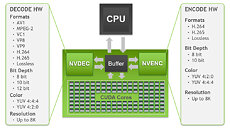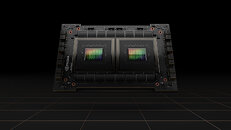
NVIDIA GeForce RTX 40 Series "AD104" Could Match RTX 3090 Ti Performance
NVIDIA's upcoming GeForce RTX 40 series Ada Lovelace graphics card lineup is slowly shaping up to be a significant performance uplift compared to the previous generation. Today, according to a well-known hardware leaker kopite7kimi, we are speculating that a mid-range AD104 SKU could match the performance of the last-generation flagship GeForce RTX 3090 Ti graphics card. The full AD104 SKU is set to feature 7680 FP32 CUDA cores, paired with 12 GB of 21 Gbps GDDR6X memory running on a 192-bit bus. Coming with a large TGP of 400 Watts, it should have a performance of the GA102-350-A1 SKU found in GeForce RTX 3090 Ti.
Regarding naming this complete AD104 SKU, it should end up as a GeForce RTX 4070 Ti model. Of course, we must wait and see what NVIDIA decides to do with the lineup and what the final models will look like.
Regarding naming this complete AD104 SKU, it should end up as a GeForce RTX 4070 Ti model. Of course, we must wait and see what NVIDIA decides to do with the lineup and what the final models will look like.











































